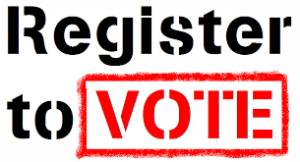![election_results[1]](https://riverside-ca.aauw.net/files/2013/06/election_results1-150x150.gif)
05/30/2013 by Alexandra Bjerg
Voter turnout for the Los Angeles municipal election last week was depressing, but even more disheartening is the severe lack of women in elected office. The Los Angeles City Council is now just one seat away from reverting back to a Good Old Boys Club. And it gets worse. Come July 1, men will also hold all three city-wide elected offices.
That’s right, just one of 18 elected officials in Los Angeles will be a woman, despite women accounting for slightly more than 50 percent (!) of the population. Los Angeles women have experienced a decline in representation since having achieved critical mass on the city council more than a decade ago.
Surprisingly, women losing ground in the nation’s second largest city garnered little media or public attention during the election cycle.
All Californians, not just women and Angelenos, should be concerned by the setback. The drop reflects an unsettling trend that extends beyond LA’s city limits. The number of women serving in political office at all levels of government has either plateaued or declined.
California Women Lead Executive Director/CEO Rachel Michelin commented, “Women bring a different perspective. That different perspective adds to the diversity of thought that members of [ny legislative body] need to have when they’re making public policy decisions. I think that you’re going to see a decline in certain issues and viewpoints being made because you don’t have more women[represented].”
So why aren’t more women being elected? Simply put, fewer women are running. If you don’t run, you can’t win. Politically educated women are becoming a rare breed and this dearth is impeding the recruitment of female candidates.
“One of the problems of our political structure, whether you’re talking locally, state, or even nationally, the behind the scenes of politics, the consulting, the polling, the strategy, is still very much dominated by men,” said Michelin. The rules of politics, the rules of campaigning are written by men. We need to educate women about the rules of politics; they need to understand what goes on behind closed doors in terms of how some of those decisions are made.”
It’s vital that women have a seat at the table. Closing the gender gap by ensuring women are proportionately represented at all levels of government benefits all Californians, not just other women. Political leadership that adequately reflects the state’s diverse population helps legitimize our democracy and restore the public’s trust in government.
[Article courtesy of California Forward]





![election_results[1]](https://riverside-ca.aauw.net/files/2013/06/election_results1-150x150.gif)